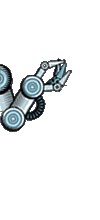Enhance your spelling by practicing with Look, Say, Cover, Write, Check.



How to use:
Look and read the word.
Say the word. Click the speaker icon.
Cover the word.
Write the word.
Check your spelling.
When adding a suffix to a word, you don’t always need to double the final letter. For example, doubling is not required if a word ends with two consonants, as in crafty, or if the suffix begins with a consonant, as in thankless.
This rule helps make spelling simpler by limiting unnecessary letter repetitions. Words that follow this pattern include everyday examples like checked and locked.
This list provides a variety of words to explore, each illustrating how the doubling rule works in different contexts.
This word list was created by Spellzone. View more Spellzone course lists or curriculum word lists.
Learn more in Unit 9. Suffixes: why we need to double letters, change them, or drop 'e'
"Spellzone fits in beautifully with our Scope and Sequence of Phonological Awareness and Spelling. It also aligns perfectly with the four areas of spelling knowledge and uses the Brain, Ears, Eyes approach to learning spelling."
Thank you!